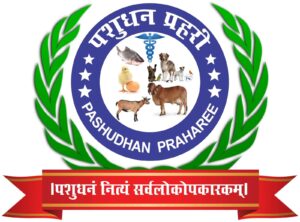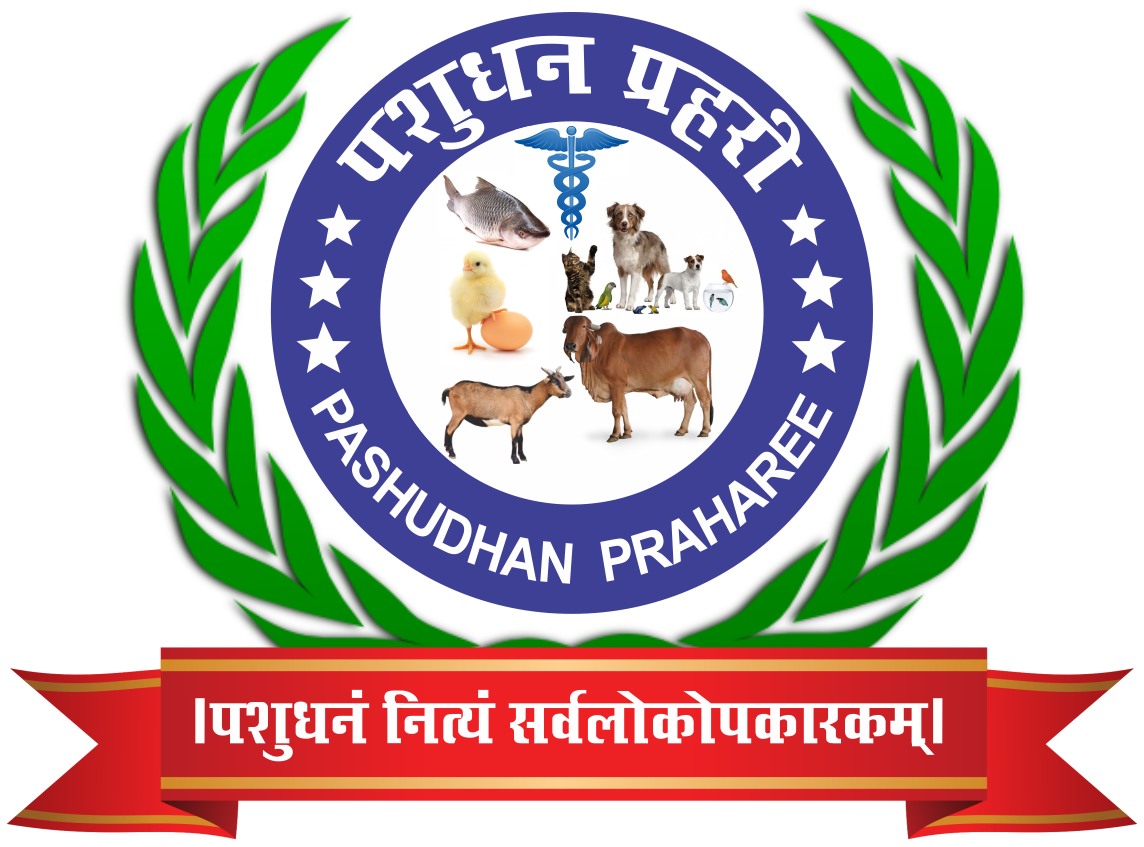Veterinary Homeopathy: A Sustainable Approach to Animal Healthcare in India
Sachin Kumar1 , Dr. Deepak Kumar2
1CoVSc & A.H , Kanke, Ranchi,
2Department of Veterinary Physiology, OUAT, Bhubaneswar
Introduction
In the late 18th century, Samuel Hahnemann founded homeopathy, an alternative medical approach that has become more and more well-liked in both human and veterinary medicine. Known as Veterinary homoeopathy, the application of homoeopathy to the treatment of animals provides a natural, holistic approach to animal health, stressing customized care and the body’s natural capacity for self-healing. The popularity of homeopathy keeps rising as doctors and pet owners look for better, non-toxic treatments for their animals.
Value of Veterinary Homeopathy
Animals are not susceptible to placebo bias. Dogs, cats, horses, cows, goats, and sheep, as far as we know, are unaware of the treatment they receive from people. Reactions from animals are not the same as placebos. Due to their environmental sensitivity, animals act as sentinels for environmental pollutants and disease. Before they have an impact on people, their responses can warn us about environmental dangers. The literal “canaries in the coalmine” of our planet are animals. Because of their short lifespans and multigenerational periods, they are perfect models for researching how diseases progress and how well treatments work. Acute and chronic illnesses in a range of animal species have given veterinary homeopathy valuable lessons that support and enhance human medical care.
Advantages of Veterinary Homeopathy
The homeopathic treatment of animals provides many distinct advantages when compared to the conventional methods. Homeopathy is:
– Gentle, natural, and non-invasive
– Less expensive & safe
– Environmentally sustainable
– Free from side effects
– Particularly suited to treatment of animal herds and wildlife
– Easy to administer
– Non-toxic
Veterinary Homeopathy Research and Clinical Studies
The prescription of homeopathic medicine is based on individual characteristics, which makes randomized controlled studies challenging and mostly inappropriate for assessing this modality. When these clinical trials do, however, show promising results, it is vitally important that we pay attention and ask why. Below is an overview of some of this research: In one study, the incidence of bovine mastitis decreased from 47.5% to 2.5%, while in another, it decreased from 42.8% to 7.1%, according to clinical trials conducted on dairy cows.
Basic Research
The description of the “world of high dilutions” followed the fascinating discussion of how to prepare a placebo solution. The most distinctive and contentious homeopathic premise is that dilution can increase a remedy’s potency; this process is called “dynamization” or “potentization.” Paolo Bellavite talked about fundamental studies that highlight their limitations, achievements, and potential theories. Since water has unique properties that allow hydrophobic interaction, very few water molecules can interact with biological compounds without leaving their “imprint,” and water clusters “activated” during homeopathic dynamization can reach a cellular receptor and cause particular reactions, life has evolved around and into water. Potential, but not yet confirmed. Papers on animal or in vitro models showed the effects of very diluted and potentized on human basophils, chicken embryos, rat duodenum, mouse blood, etc.
There was discussion of experimental evidence about the “Similia principle.” We went over examples of “hermetic effects,” which occur when differing dosages of a stimulus or chemical have opposing effects on the same receiver system. Paolo Bellavite demonstrated unequivocally that the initial conditions of a system (cells, organs, and organisms) can have a significant impact on the outcome of treatment, and that certain pharmacological effects can be contradictory. This supports the potential application of the “similia principle” as a therapeutic and effective strategy.
The speaker at the conference’s conclusion discussed how homeopathic therapy is consistent with the ever-changing complexity of illnesses. According to homeopathic theory, healing is a complex network’s self-reorganization. The structured complexity of life is made possible by homeodynamic settings, and a pharmaceutical complex information that mimics disease through the “similia” principle may aid in a gradual recovery to homeodynamic health.
The three tenets of homeopathy. Similarity: healing is achieved by taking a drug that proved by healthy individuals have yielded symptoms and signs very similar to those of the patients. Dilution and dynamization: homeopathy use diluted and ‘dynamized’ drugs: dilution followed by succussion should increase the drug ‘potency’. Individualization: homeopathic approach is personalized, is a ‘holistic’ method of diagnosis and of prescription. These three strictly related aspects of homeopathy can become objects of scientific investigation.
Clinical Research
The published homeopathic clinical trial and meta-analysis review was very detailed (as many as 80 studies were reviewed). Results varied, and the following observations were extensively discussed during the course of the conference:
(i)homeopathic research requires more rigorous trials;
(ii) clinical studies on asthma, allergies and other respiratory pathologies yielded the best results;
(iii) classic homeopathy requires more specific trail methodology.
A recent well-known meta-analysis from The Lancet that addressed the bias against homeopathy—mainly because of the selection of trials that were examined—received particular attention. Homeopathic trials need to use more exacting methods because they usually don’t use laboratory markers, randomization criteria, or placebos. The speaker emphasized the effectiveness of homeopathy, which was demonstrated by both the use of tailored therapy, a sophisticated therapeutic approach, and the effects of particular drugs on particular pathologies.
Professor Giuseppina Pitari added “provings,” or homeopathic pathogenetic trials (HTPs), to the discussion of trials. Homeopathic medicine’s foundational HTPs suffer from significant methodological variability, including disparate objectives, inconsistent results reported, the use of placebos, supervision issues, inadequate remedy descriptions, multivariegated symptom collections, a lack of data analysis, etc. Thus, there hasn’t been a meta-analysis of HTPs yet. A potential approach was explained, along with some indications for the study design (double-blind, placebo-controlled trial), drug dosages and potency, a description of the potentized chemical that included information on its toxicological effects, and the observation period.
Applications in Veterinary Medicine
Homoeopathy emphasizes the use of very diluted chemicals to encourage the body’s self-healing capabilities, providing a natural and holistic approach to treating animals. Veterinary homoeopathy uses these ideas to treat a variety of animal ailments. The precise homeopathic treatments for a number of prevalent veterinary illnesses are examined below.
Skin Conditions
- Eczema and Dermatitis
- Sulphur:Often used for animals with dry, scaly, itchy skin, especially if the itchiness worsens with heat.
- Graphites:Suitable for animals with thick, cracked skin and a tendency towards infections.
- Arsenicum album:Used for conditions with burning sensations and anxiety, where the skin is red and irritated.
- Allergies
- Apis mellifica:Effective for allergic reactions with swelling and redness, especially when the skin is sensitive to touch.
- Urtica urens:Useful for hives and itching with a burning sensation.
- Hot Spots
- Calendula:Known for its soothing properties, Calendula is often used topically for hot spots to promote healing and reduce inflammation.
- Hepar sulphuris:Effective for infected hot spots that are sensitive to touch and may ooze pus.
Digestive Disorders
- Diarrhea
- Arsenicum album:Indicated for diarrhea accompanied by restlessness, anxiety, and exhaustion, often with vomiting.
- Podophyllum:Suitable for watery, profuse diarrhea, especially when accompanied by a foul smell.
- Constipation
- Nux vomica:Useful for animals with constipation, particularly if they have a history of overindulgence in rich foods.
- Alumina:Effective for severe constipation with dry, hard stools.
- Vomiting
- Ipecacuanha:Helpful for persistent nausea and vomiting, especially when the animal feels worse after eating.
- Phosphorus:Suitable for animals that vomit soon after drinking or eating and exhibit thirst for cold water.
Respiratory Issues
- Kennel Cough
- Drosera:Effective for dry, spasmodic coughing, especially when the cough comes in fits.
- Spongia tosta:Useful for dry, barking coughs that are worse at night and improve with warm drinks.
- Asthma
- Arsenicum album:Indicated for asthma with anxiety, restlessness, and difficulty breathing, often worse at night.
- Bryonia:Suitable for dry, painful coughs that worsen with movement.
- Bronchitis
- Antimonium tartaricum:Effective for bronchitis with rattling cough and difficulty expectorating mucus.
- Kali bichromicum:Useful for thick, sticky mucus that is difficult to expel.
Behavioral Problems
- Anxiety
- Aconite:Effective for sudden, acute anxiety, often associated with fear or shock.
- Gelsemium:Suitable for animals that exhibit trembling, weakness, and fear of unfamiliar situations.
- Aggression
- Belladonna:Used for sudden, violent aggression, especially if the animal has dilated pupils and a red face.
- Nux vomica:Suitable for irritable, easily angered animals that are sensitive to noise and light.
- Fear and Phobias
- Phosphorus:Effective for animals that are overly sensitive to their environment and fearful of thunderstorms or loud noises.
- Borax:Suitable for animals with a fear of downward motion or heights.
Injuries and Trauma
- Bruising and Swelling
- Arnica montana:The most well-known remedy for trauma, effective for bruising, swelling, and shock after an injury.
- Bellis perennis:Suitable for deep tissue injuries and muscle soreness, especially after surgery.
- Sprains and Strains
- Rhus toxicodendron:Effective for strains and sprains with stiffness and pain that improves with movement.
- Ruta graveolens:Suitable for injuries to tendons and ligaments, especially if the area is bruised and sore.
- Wounds and Infections
- Calendula:Known for its antiseptic properties, Calendula is often used topically to promote healing and prevent infection in wounds.
- Hepar sulphuris:Effective for abscesses and infected wounds, particularly when the area is sensitive and discharges pus.
Chronic Conditions
- Arthritis
- Rhus toxicodendron:Suitable for arthritis with stiffness and pain that improves with movement and warmth.
- Bryonia:Effective for arthritis with pain that worsens with movement and pressure.
- Kidney Disease
- Apis mellifica:Used for kidney issues with swelling, especially if there is difficulty urinating.
- Berberis vulgaris:Suitable for animals with kidney stones or urinary tract infections.
- Heart Disease
- Crataegus:Known for its tonic effect on the heart, used to support overall heart function.
- Digitalis:Effective for heart conditions with irregular heartbeat and difficulty breathing.
Conclusion.
Veterinary homeopathy provides a natural and comprehensive method of treating a variety of animal ailments. Animals can receive safe and efficient care through homoeopathy, which emphasizes tailored treatment and the use of highly diluted medications to encourage the body’s self-healing processes. The benefits of homeopathy in enhancing animal health and well-being are becoming more widely acknowledged by both veterinarians and pet owners, even if scientific evidence and acceptance of the practice are still developing.
References
1.Evid Based Complement Alternat Med. 2006 Dec 6;4(2):271–273. doi: 10.1093/ecam/nel085
2 Epstein S. The Evidence Base for Veterinary Homeopathy. Paper submitted to the American Veterinary Medical Association. 2013 https://theavh.org/wp-content/uploads/Homeopathy-White-Paper.pdf .
4 Pitcairn R and S. Natural Health for Dogs and Cats. Rodale books, 2017. https://tinyurl.com/yc5yadpp
5 Dupree G. Homeopathy in Organic Livestock Production. Acres USA. 2010 https://www.acresusa.com/products/homeopathy-in-organic-livestock-production
6 Hamilton D. Homeopathic Care for Cats & Dogs. North Atlantic Books. 2010 https://tinyurl.com/yc4rdf9b
7 Sheaffer CE. Homeopathy for the Herd: A Farmer’s Guide to Low-Cost, Non-Toxic Veterinary Care of Cattle. Acres USA. 2003 https://www.acresusa.com/products/homeopathy-for-the-herd
8 Lotfollahzadeh S, et al. Homeopathy and Foot and Mouth Disease in Cattle. Homeopathy. 2012. https://www.ncbi.nlm.nih.gov/pubmed/22818233




